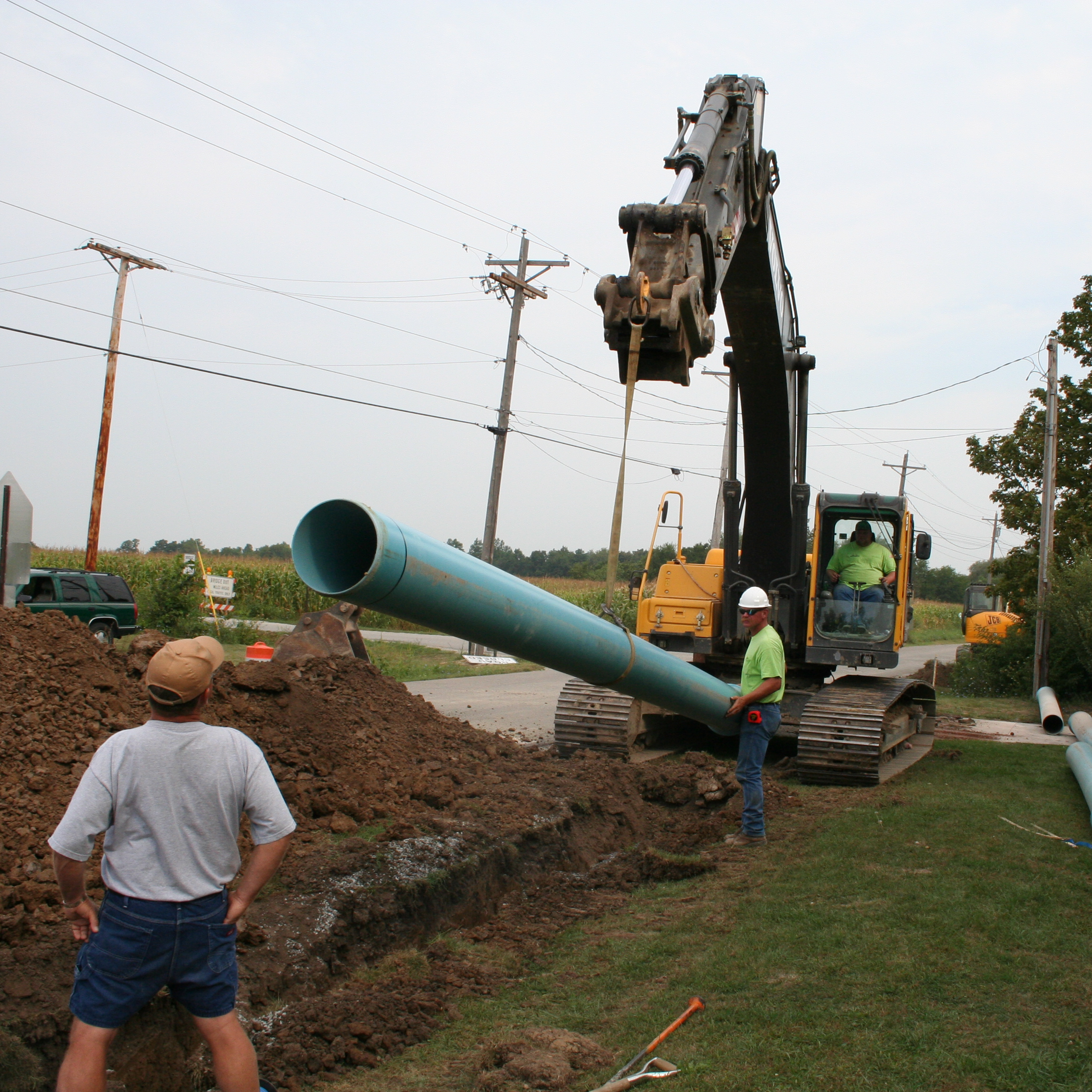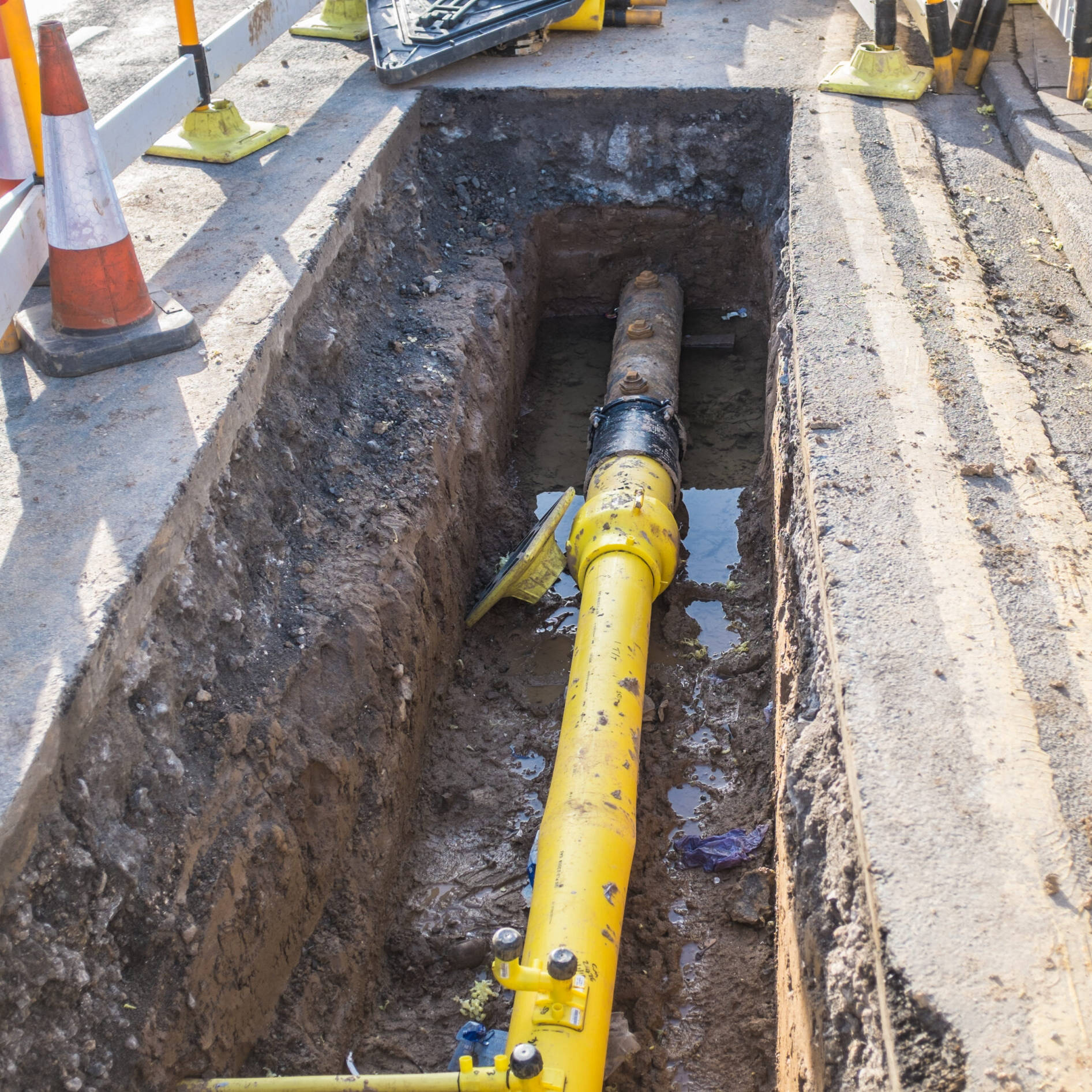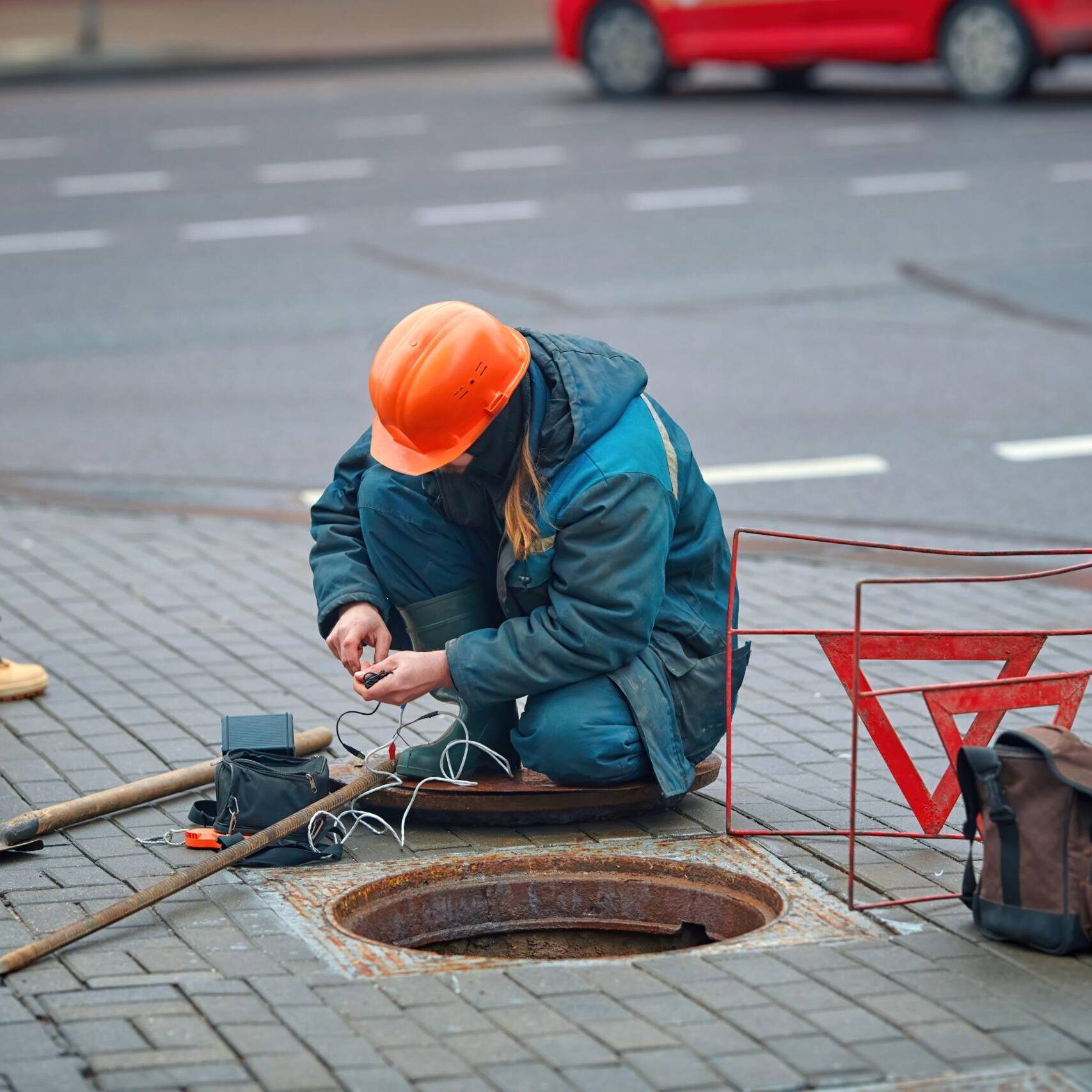Once the failure is located, there are several solutions we can use to completethe repair.
Sectional liners
Pipe Bursting
Pipe Joint Repair
Manhole Lining & Chimney Repair

Pipe Repair
Over time, a joint may open and it can take in soil, sand, stone, roots and various types of debris, which then creates a void above the pipe. The void may become a sinkhole or create other issues that make an area unsafe. That’s when we are asked to determine what is wrong and to make recommendations for the most long-lasting and cost-effective repair.
Trenchless pipe repair is an important method of repair that we use to repair sewers without requiring soil excavation. We gain access to the inside of the pipe, insert a CCTV crawler, which allows us to visually inspect the pipes for failures, breaks and misalignments in the main line or laterals.
Sectional Liners
If we find a broken area of pipe or a dislocated joint, a sectional liner, or a short patch, is installed to repair the fault.


Neighborhood projects benefit from pipe bursting because there is minimal disruption to homeowners and little or no damage to landscaping, trees, sidewalks, roads, etc. This means very few complaints to the municipality.
Pipe Bursting
When a large section of pipe has failed, pipe bursting can be used to literally replace that section of pipe with a brand-new pipe and return it to full service.
The old pipe is destroyed, and a new pipe is installed in the same space. The new pipe can be larger, smaller or the same size diameter as the pipe being replaced.
Pipe Joint Grout Repair
When a sewer line or water line is not performing as expected, we will:
- Clean the pipe and insert a CCTV crawler to identify the problem.
- If a joint is a problem, we insert or pump grout into the joint.
- We let it dry for 30 seconds and then do a pressure test
- If it holds 10 lbs. PSI, then we move to the next joint.
- If it fails, we regrout and retest.
Consider watching the video showing Pipe Joint Grout Repair

Manhole Lining and Chimney Seals
Manhole chimney seals will often fail because of the freeze and thaw cycle that municipalities in the northern part of the US experience.
When the ground freezes, a manhole casting can heave or lift which moves the top a few inches out of position. In the spring, the ground thaws and the manhole casting will resettle but often it is out of position, and you end up with a void.
A chimney seal is designed seal the void between the manhole cover and the manhole’s adjusting rings caused by the movement of the manhole cover.
We use two types of liner options for manhole rehabilitation:
Heavy duty elastic liner
- This liner is installed to seal the casting and adjusting rings making a watertight seal that should last for decades.
Cement type of liner
- This is a repair for manholes or structures with high hydrogen sulfide damage it is a structural repair
- This is a very high-strength concrete, up to 15,000 lbs. PSI of breaking strength. This cement is also corrosion-resistant to hydrogen sulfide, so it doesn’t affect the new or existing structure.
- Depending on the condition of the structure, a cementitious liner can be installed normally with 1-2” thickness. If conditions require it, a 4" thickness can be applied. The Cementious liner is a structural repair, not just an elastic liner without structural capacity.

